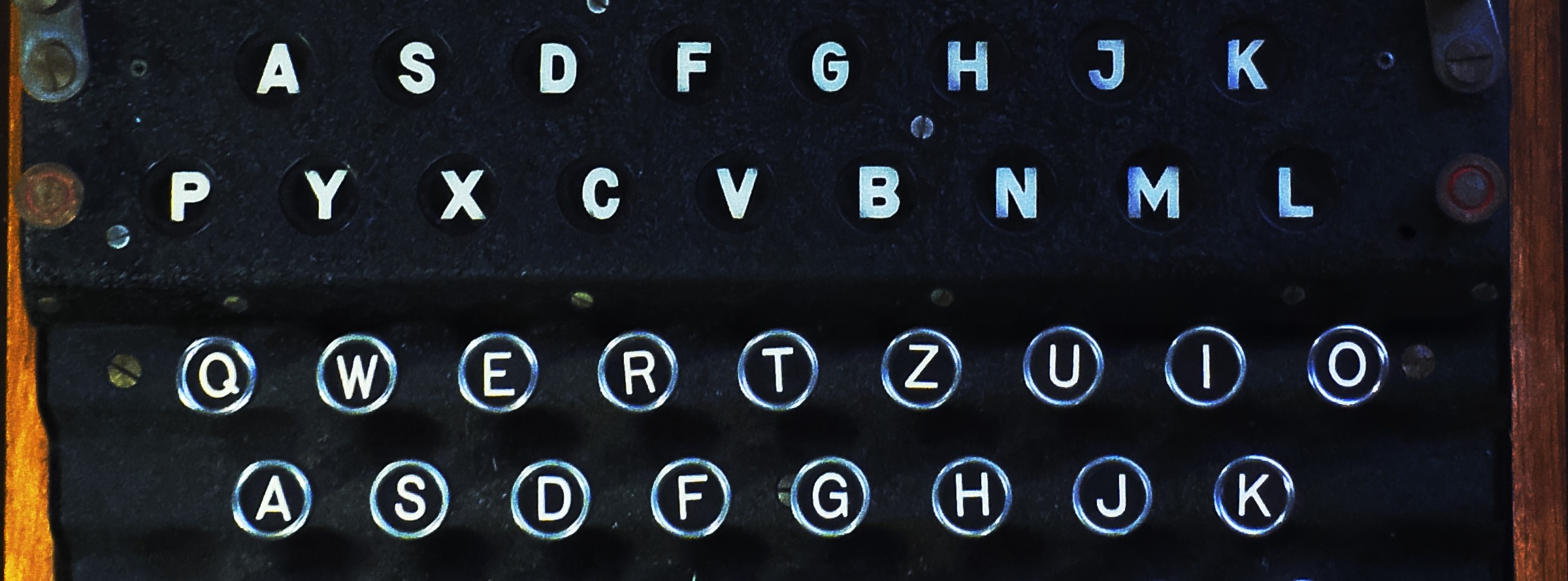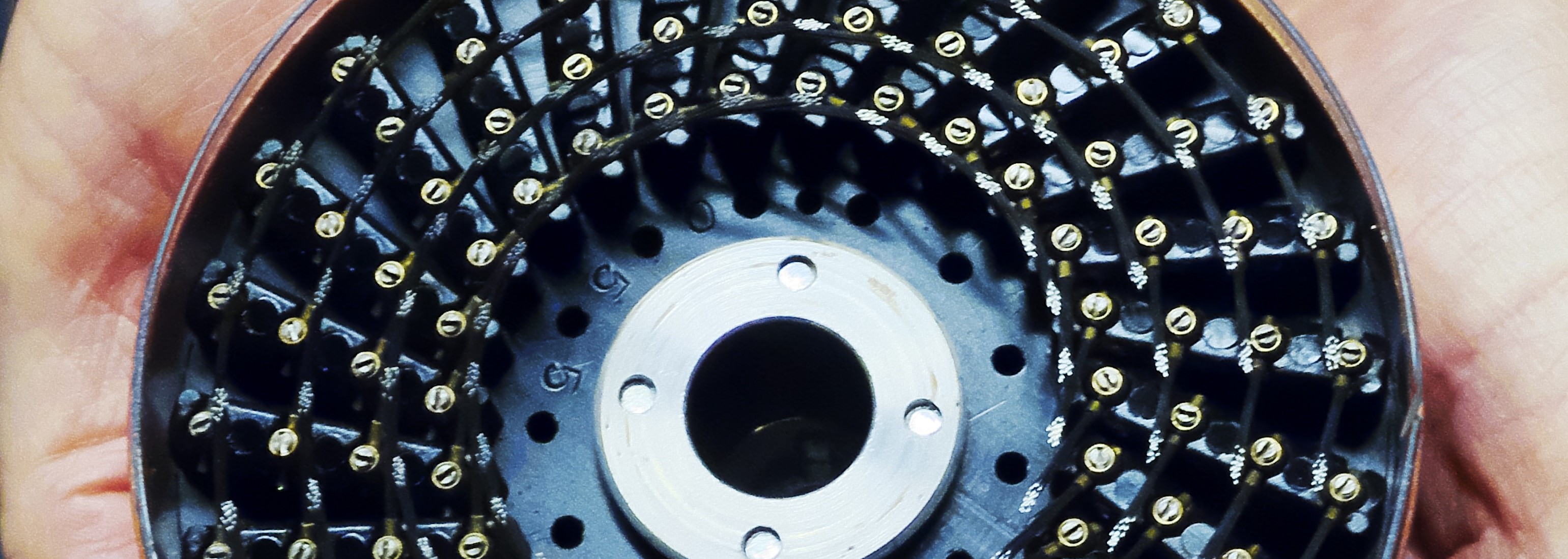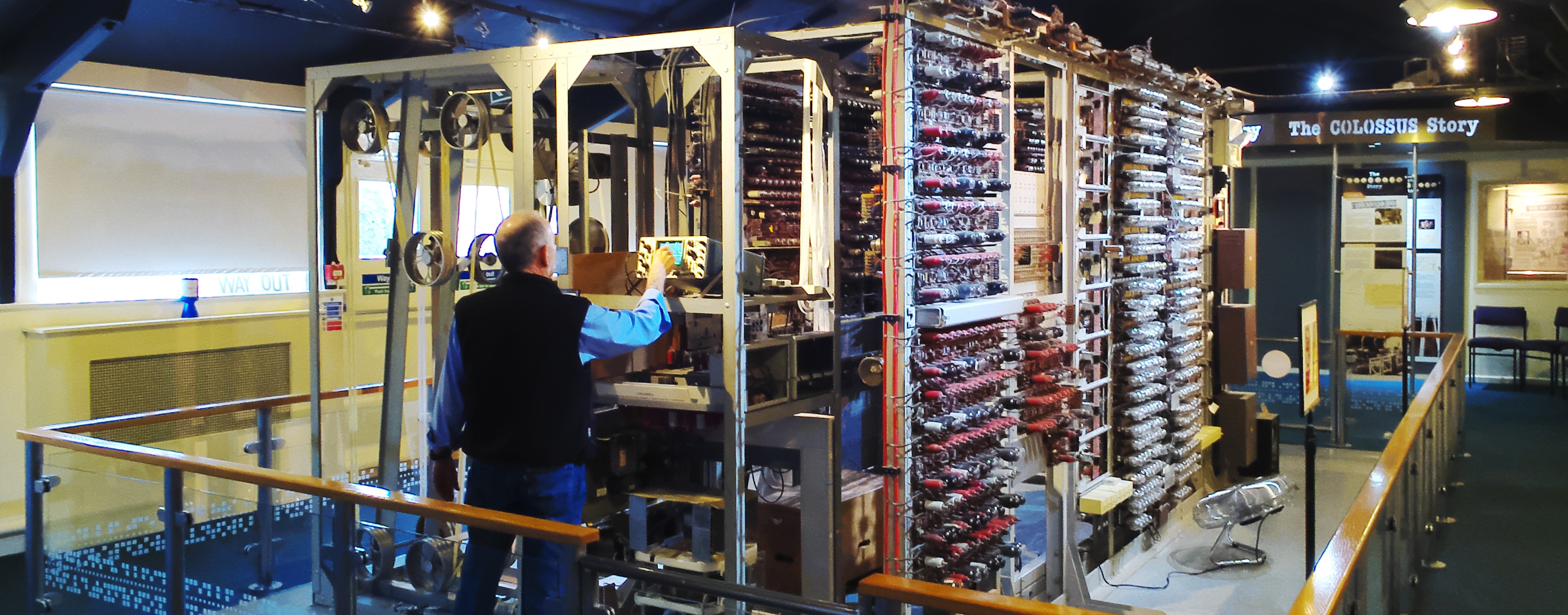For Bletchley Park to make one of its greatest advances in decoding enemy messages, two brave men sacrificed their lives in a sinking submarine, thousands of miles from Britain. Here is the story of Lieutenant Tony Fasson GC and Able Seaman Colin Grazier GC, who went down to the deep while rescuing codebooks relating to the German Naval Enigma machines. This is also the story of young Canteen Assistant Tommy Brown GM, who survived in the water, and carried the codebooks to safety.
Their work meant that the codes relating to submarine movements were broken after further analysis at Bletchley Park. 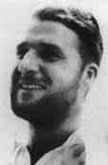 Because of this, countless thousands of lives were saved on Atlantic convoys, and the preparations could be more confidently made for the D-Day landings that led to the breaking of the enemy’s hold on much of western Europe, and victory in the war.
Because of this, countless thousands of lives were saved on Atlantic convoys, and the preparations could be more confidently made for the D-Day landings that led to the breaking of the enemy’s hold on much of western Europe, and victory in the war.
Codebreaking wasn’t all about the methodical work of the men and women in the huts and mansion house in Buckinghamshire. Sometimes, it required the greatest possible sacrifice by men thousands of miles away, imprisoned in a sinking submarine, killed by drowning in the cold waters of a foreign sea.
The Men
Lieutenant Fasson was born in Roxburghshire 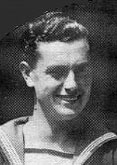 in 1939, and joined the Royal Navy in 1930. His colleague Able Seaman Grazier came from Staffordshire, and was nineteen years old when World War II broke out. But the two men were brought together on HMS Petard, serving in the Mediterranean Sea in 1942, where their devotion to duty altered the course of the war.
in 1939, and joined the Royal Navy in 1930. His colleague Able Seaman Grazier came from Staffordshire, and was nineteen years old when World War II broke out. But the two men were brought together on HMS Petard, serving in the Mediterranean Sea in 1942, where their devotion to duty altered the course of the war.
U-boat Surrender
On the evening of October 30 1942, a German submarine, U-559, had been caught by the scan of an Allied radar off Port Said on the Egyptian coast. Depth charges from HMS Petard were used to pummel the U-boat’s crew into submission, with 38 of the 45 men surviving at the point when the vessel surfaced and was abandoned. But the commander of the U-boat had left a booby-trap for any Allied servicemen who wanted to search it: the seacocks had been left open, so the submarine would be scuttled.
Volunteers to search the sinking vessel were sought on HMS Petard; the ship’s First Officer, Fasson, his colleague Grazier and a sixteen-year-old NAAFI canteen assistant,  Tommy Brown put themselves forward. After stripping, Fasson and Grazier leapt from the ship into the cold night-time waters of the Mediterranean Sea to swim quickly to the submarine, to see what secrets could be rescued. Brown followed after in a small boat. He shouldn’t have been there at all, for he had lied about his age in order to join up.
Tommy Brown put themselves forward. After stripping, Fasson and Grazier leapt from the ship into the cold night-time waters of the Mediterranean Sea to swim quickly to the submarine, to see what secrets could be rescued. Brown followed after in a small boat. He shouldn’t have been there at all, for he had lied about his age in order to join up.
The Sacrifice Inside
But in the submarine’s captain’s cabin, there was a kind of treasure: two code-books printed in water-soluble ink. These would be of no use if the vessel had gone down and had been explored by divers; they must be kept dry or the printing simply vanishes. Fasson and Grazier handed these to Brown who had, himself, swum from the little boat to the submarine and climbed part of the way down the vessel’s conning tower. Fasson and Grazier, deeper inside, knew there could be even more valuables to rescue for Naval Intelligence, a continent away.
But the water pouring through the seacocks and the hole made by HMS Petard’s guns had brought U-559 to the end of its time on the surface. Brown saw this, and shouted a warning to get out. Then, even as Fasson and Grazier were on the ladder taking them up, the heavy submarine “sank like a stone”. It tumbled over into the black waters, and fell quickly to the bottom giving the two men no chance of finding an exit. The U-boat became their coffin.
Fasson and Grazier could never have known the effects of their actions. Nor would most of the world, because the importance of the codebooks they found was only revealed after thirty years, and a relaxation of the Official Secrets Act. Today, the rest of the story can be told.
A Secret Discovered
They had rescued the cypher book for a type of coded radio transmission that every visitor to Bletchley Park hears about today: the Short Weather Cypher, called Wetterkurzschussel. Also safely on Tommy Brown’s boat was the Short Signal Book, known as the Kurzsignalsheft.
At Bletchley Park, the three-rotor Enigma machine’s secrets were daily being revealed and shared with the Allied forces’ commanders. But the submarines had a four-wheel system, hugely more complex to break. The codebreakers called this “Shark”. Ten months before Fasson and Grazier’s sacrifice, the codes had been changed and so the messages reverted to nonsense. The Allies could not know where the U-boats were patrolling, and lives were being lost in their attacks on Atlantic convoys and elsewhere. Churchill wrote, “the only thing that ever really frightened me during the war was the U-boat peril”.
The short weather cypher rescued by Fasson and Grazier, and handed for safe keeping to canteen boy Brown, was the missing key to the codes that had perplexed the codebreakers for ten months. Comparing the German naval intercepts with the plain text they could see in the code books, they quickly learned how the code was changed by the fourth Enigma wheel. Once a weather message was intercepted, the full settings could be quickly deduced. Extra analysis provided ways of breaking all similar codes. The German navy’s messages, so vital to their tactics of surprise and destruction, were open to the Allies, and the U-boats could be thwarted.
Vision Restored
Within the first hour of this discovery, the positions of 15 submarines were known, and measures taken against them. With long-range bombers and a particularly aggressive campaign, the once-secret weapon of enemy submarines was blunted, and the war began to turn.
It is estimated that this breakthrough saved 1,250,000 tons of shipping and countless seafarers’ lives in December 1942 and January 1943. With greater confidence, the Allies were able to plan for the D-Day landings eighteen months later.
Bletchley Park’s Research Historian Dr David Kenyon, said: “The achievements of the crew of HMS Petard in October 1942 were vital to the Allies’ success in the war at sea. The documents they captured allowed Bletchley Park to read German U-Boat codes for the first time in nearly a year, and to continue to do so for the remainder of the war. As a direct result the Battle of the Atlantic against the U-boats was effectively won in 1943, paving the way for D-Day in 1944 and eventual Allied victory”. And eminent naval historian Ralph Erskine asserts: “Few acts of courage by three individuals can ever have had so far-reaching consequences”.
The NAAFI Boy
Brown had no idea his life, too, would soon draw to a close. 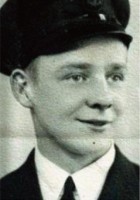 After he had been promoted, and his true age discovered, he was transferred to HMS Belfast; but it was not the war that claimed him. He died rescuing his two sisters from their burning tenement slum building in North Shields. In Tynemouth Cemetery, Brown was buried with full military honours. When his service medals were returned to Tyneside in 2010, five of his brothers and sisters were there to see them arrive home.
After he had been promoted, and his true age discovered, he was transferred to HMS Belfast; but it was not the war that claimed him. He died rescuing his two sisters from their burning tenement slum building in North Shields. In Tynemouth Cemetery, Brown was buried with full military honours. When his service medals were returned to Tyneside in 2010, five of his brothers and sisters were there to see them arrive home.
This might be Tommy Brown’s account of the incident, though it was left unsigned.
The lights were out. The First Lieutenant [Fasson] had a torch. The water was not very high but rising gradually all the time. First Lieutenant was down there with a machine gun which he was using to smash open cabinets in the Commanding Officer’s cabin.
He then tried some keys which were hanging behind the door and opened a drawer, taking out some confidential books which he gave me.
After finding more books in cabinets I took another lot up (he was describing his second descent inside the U-boat)…
The water was getting deeper and I told the First Lieutenant they were all shouting on deck. He gave me some more books from the cabin. I took these up on deck. The First Lieutenant appeared at the bottom of the hatch. I shouted: ‘You had better come up’ twice and they had just started up when the submarine started to sink very quickly.
Remembered Today
Lieutenant Fasson and Able Seaman Grazier were posthumously awarded the George Cross “for outstanding bravery 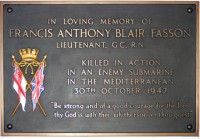 and steadfast devotion to duty in the face of danger”, and Brown received the George Medal (for he was a civilian). In the Royal British Legion club in Jedburgh, along with plaques in churches in Jedburgh and Bedrule, the public today can see commemorations of Fasson’s bravery. His George Cross can be seen in Edinburgh Castle. Meanwhile, in the streets of Tamworth, Grazier’s home, their names are remembered all along Fasson Close, Grazier Avenue, Bletchley Drive and Petard Close. Tommy Brown has an avenue all of his own there, too, and a stained-glass window in the Saville Exchange Building in North Shields.
and steadfast devotion to duty in the face of danger”, and Brown received the George Medal (for he was a civilian). In the Royal British Legion club in Jedburgh, along with plaques in churches in Jedburgh and Bedrule, the public today can see commemorations of Fasson’s bravery. His George Cross can be seen in Edinburgh Castle. Meanwhile, in the streets of Tamworth, Grazier’s home, their names are remembered all along Fasson Close, Grazier Avenue, Bletchley Drive and Petard Close. Tommy Brown has an avenue all of his own there, too, and a stained-glass window in the Saville Exchange Building in North Shields.
These three men could legitimately be said to have changed the course of World War II. On that cold, dark night in the waters of the Mediterranean Sea, they did their duty. Then Bletchley Park’s staff did theirs.
Credits: For this article, I have drawn upon material written by, or provided by, Wikipedia; One MK; AwesomeStories.com; SERVICE HISTORIES of ROYAL NAVY WARSHIPS in WORLD WAR 2 by Lt Cdr Geoffrey B Mason RN (Rtd); Discover The Borders website; Graham Ellsbury; and many others.
https://en.wikipedia.org/wiki/Colin_Grazier
https://en.wikipedia.org/wiki/Tommy_Brown_(NAAFI_assistant)
https://www.awesomestories.com/asset/view/Enigma-Heroes-Fasson-Grazier-and-Brown
https://www.awesomestories.com/asset/view/126014
http://www.onemk.co.uk/
http://www.naval-history.net/xGM-Chrono-10DD-49P-Petard.htm
http://www.discovertheborders.co.uk/the-fasson-enigma.html
http://www.ellsbury.com/ultrafassongrazier.htm
http://www.theguardian.com/uk/the-northerner/2011/nov/25/tommy-brown-north-shields-tyneside-george-medal-enigma
http://www.39-45war.com/petard.html


